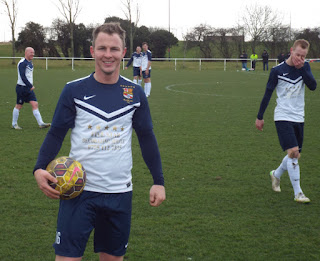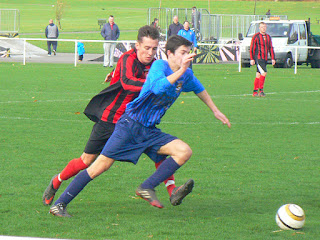Blakelaw is an electoral ward situated in the West End of the city of Newcastle upon Tyne in North East England. The population of the ward is 11,186, which is 4.6% of the city's population. Car ownership in the area is 50.6%: this is lower than the city average of 54.7%, increasing to 11,507 at the 2011 Census. House prices in this area average at £114,000 (Feb 2007).
Blakelaw was developed in the early part of the 20th century in order to meet demand for more housing in the North East. During the Second World War a secret war centre was built in the old quarry and extended many levels below ground. This was the headquarters for No 13 Group, who played a vital part in the Battle of Britain. Five posts have been installed in Blakelaw Park as part of a 'listening trail' which tells the story of the life of the bunkers and people who worked in them.
In terms of the Demographics of Blakelaw, it is very similar to many other parts of Newcastle. For age groups, 26.3% were 17 years old and under, 59.2% of its population was between the ages of 18 and 64, and 14.5% were over 65. In terms of Ethnicity it was 87.2% White, 6.8% Asian, 3.4% Black and 1.5% mixed which is a similar ethnic make up to quite a few parts of Newcastle but significantly less diverse as parts of the West End.
My most recent visits to Blakelaw were to watch Sunday League Football but if you scroll down a bit more then you will see some other photos of Blakelaw.
Description courtesy of Wikipedia.
10th April 2016

Blakelaw Park.
29th April 2015

Blakelaw Park.
14th April 2015
Blakelaw Social Club vs The Willows.
Abandoned because of naughtiness after 58 mins with The Willows 2-0 up.
9th April 2015
Blakelaw Social Club vs Lemington Social Club.
1st March 2015
Blakelaw Social Club vs Daisy Hill.
2nd November 2014
Blakelaw Social Club vs St. Peters Social Club.
29th March 2010
Demolition of Moulton Place Flats.
9th March 2009




r.jpg)
r.jpg)
r.jpg)
r.jpg)
Blakelaw Park.
3rd October 2007

Moulton Place.


Blakelaw Social Club.





Blakelaw Shops.


Blakelaw 13 Group Fighter Command Filter Room Entrance.
Following the Battle of Britain, it was recognised that the central command structure was in danger of being overloaded with information from the various radar stations and observation. To overcome this potential problem, each Group Headquarters were provided with a Filter Room. The purpose of this facility was to receive all reports of aircraft locations, to assimilate and assess this information in order to provide the most accurate possible picture to the Operations Room. The Filter Room for Kenton Bar was built on a separate site, in Blakelaw Quarry. This facility was somewhat smaller than the Group Headquarters, but built to a similar pattern.
By 1943, the air defence requirements had changed, with the increase in offensive actions against occupied Europe and the reduction of massed bombing raids on Britain. 13 Group was amalgamated with 14 Group on the 15th July 1943 and the Group Control was renamed RAF Blakelaw becoming a Sector Operations Room for Catterick and Ouston Sectors in 12 Group.
This change in role meant that the Filter Room apparently became redundant and was taken over by the Military Police in June 1944. The exact role of the Blakelaw bunker at this time is in some doubt; there were proposals to establish a joint USAAF/RAF command centre or even to convert the site into a Maintenance Unit but neither of these appear to have come to anything. In September of that year, the Filter Room was turned over to 321 Squadron, attached to 22 Group.
Council proceedings of 1952 record the purchase and fitting out of the former RAF Filter Room at Blakelaw Quarry as the Newcastle County Borough Main Civil Defence Control Centre with a purpose built Sub Control being built at Heaton. It remained in use until the stand down of Civil Defence in 1968 after which date it was retained on care and maintenance as the County Borough War HQ.
In the 1971 Home Defence Review it was still officially performing this role and in 1974 it was ceded to Tyne and Wear County. The newly formed Newcastle District Council officially designated it as their war HQ but nothing was done to it due to the Council’s extreme left wing policy on Civil Defence.
In about 1982 the Sub Control in Heaton was designated as Main War HQ. In 1986 Tyne and Wear County was abolished and the newly formed Tyne and Wear Fire and Civil Defence Authority wanted to turn Blakelaw into a modern emergency centre, a scheme that was halted by the end of the cold war in 1991.
In the mean time, around 1984, it had been rented to the local sea scouts becoming TS Nelson, a use which continued until about 2000 when it was vacated.
Once the sea scouts left the small brick blockhouse above the main entrance was demolished and the rubble dumped down the stairwell; there is no evidence of this entrance today.
The sunken emergency exit was retained but the doors were welded shut and a metal grille was welded across the entrance porch to prevent unauthorised access.
The bunker which now stands in the middle of Moulton Court on the Blakelaw Estate (sheltered housing) between two high rise blocks will not be demolished but the sunken area containing the emergency exit will be filled in bringing it up to the level of the surrounding ground which will be landscaped and turned into a public garden with seating.
The filter room at Blakelaw was visited by members of Subterranea Britannica and Tyne and Wear Museums researchers on 1st December 2004. The bunker is located within a secure compound the gates of which have been welded shut. A council maintenance team arrived on the morning of the visit to cut the welds of the gate and to cut the welds off the emergency exit door into the bunker which is located in a sunken area on the north side. Once inside the bunker there is a short flight of steps down to the upper corridor. At the top of the stairs there is a small room to the right where a small compressor has been installed by the sea cadets during their occupation of the bunker. The upper corridor runs around the north and east side of the upper floor and part way round the south side to a point where it enters the upper level of the operations room.
There are two stairways down to the lower level one on the north side of the bunker and another on the east side. All the rooms on the upper level, apart from the toilets have been stripped of all original fixtures and fittings with the exception of ventilation trunking which is still in place in some of the rooms through the bunker; many of the rooms have been altered for use by the sea cadets.
One of the small rooms close to the emergency exit has been converted into a strong room with a secure steel door, inside this room there are a number of original cables, now cut off as they pass through the wall into the room. An adjacent room has been turned into a recreation area with a bar. At the west end on the north side there is a small room containing electrical switchgear which probably dates from the 1950’s when the bunker was used as the main civil defence control for Newcastle County Borough, close to this room is the backfilled stairway down from the demolished main entrance. At the bottom of the stairway is a small room with a hand written notice on the wall relating to the timings of a Colour Ceremony performed by TS Nelson.
The lower corridor is similar running around the north and east side of the side of the bunker and entering the operations room half way along the south side. On the north side the corridor continues down a short flight if steps into what was the ventilation plant room. Here there is evidence of ventilation trunking and there are a number of concrete machine beds still in place. The two level operations room was used as the ‘deck’ of TS Nelson and a short flagpole is still there lying on the floor. A small stage has been constructed to one side of the room indicating it has also been used for social functions by the sea cadets.
Again, all original fixtures and fittings on the lower level have been removed and one of the rooms has been converted into a kitchen. There is some standing water on the lower floor at the east end and some fire damage to furniture and a partition wall in one of the rooms.
Once a full survey of the bunker had been made the emergency exit door and grille and the entrance gate to the compound were rewelded by the council contractors.
Source: Subterranea Britannica.
See my other photos around Blakelaw:


























































































































No comments:
Post a Comment